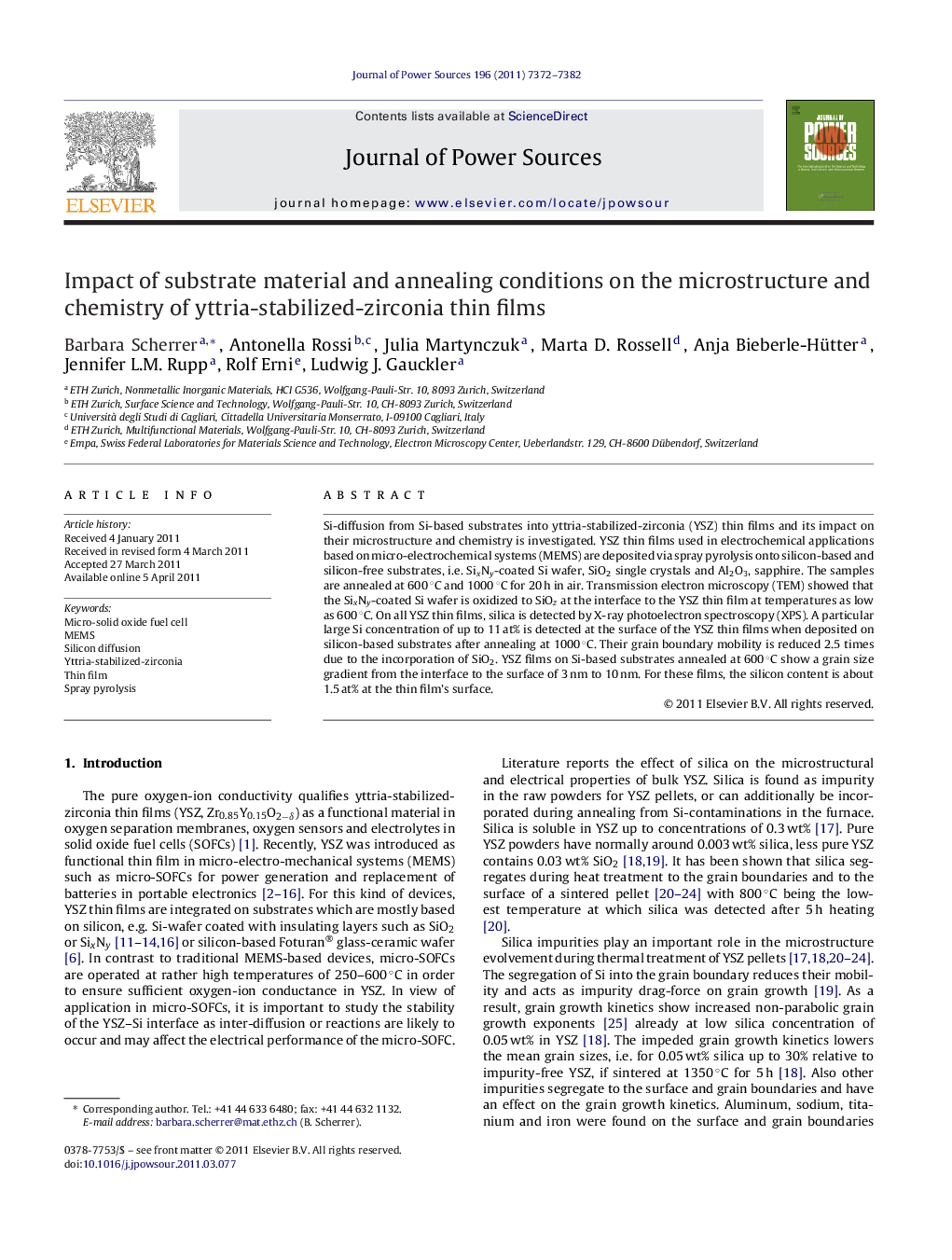| Article ID | Journal | Published Year | Pages | File Type |
|---|---|---|---|---|
| 1293349 | Journal of Power Sources | 2011 | 11 Pages |
Si-diffusion from Si-based substrates into yttria-stabilized-zirconia (YSZ) thin films and its impact on their microstructure and chemistry is investigated. YSZ thin films used in electrochemical applications based on micro-electrochemical systems (MEMS) are deposited via spray pyrolysis onto silicon-based and silicon-free substrates, i.e. SixNy-coated Si wafer, SiO2 single crystals and Al2O3, sapphire. The samples are annealed at 600 °C and 1000 °C for 20 h in air. Transmission electron microscopy (TEM) showed that the SixNy-coated Si wafer is oxidized to SiOz at the interface to the YSZ thin film at temperatures as low as 600 °C. On all YSZ thin films, silica is detected by X-ray photoelectron spectroscopy (XPS). A particular large Si concentration of up to 11 at% is detected at the surface of the YSZ thin films when deposited on silicon-based substrates after annealing at 1000 °C. Their grain boundary mobility is reduced 2.5 times due to the incorporation of SiO2. YSZ films on Si-based substrates annealed at 600 °C show a grain size gradient from the interface to the surface of 3 nm to 10 nm. For these films, the silicon content is about 1.5 at% at the thin film's surface.
► Si-diffusion from Si-based substrates into Zr0.85Y0.15O2 (YSZ) thin films is studied. ► On all YSZ thin films, silica is detected by X-ray photoelectron spectroscopy (XPS). ► Up to 11 at% Si is detected at the surface of the films after annealing at 1000 °C. ► About 1.5 at% Si was observed on YSZ films annealed at 600 °C. ► The low temperature samples show a grain size gradient of 3–10 nm.
